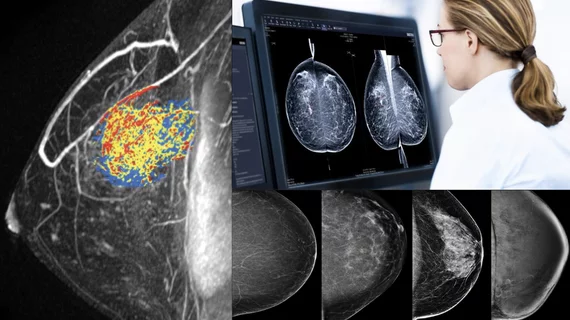New findings ‘challenge the use of imaging surveillance’ after any mastectomy
Regardless of whether or not they received reconstructive surgery, post-mastectomy patients probably need no follow-up imaging for breast cancer.
So conclude researchers at Örebro University in Sweden whose literature review and meta-analysis was published Dec. 1 in JAMA Network Open [1].
Daniel Smith, Setara Sepehr, Antonis Valachis and colleagues analyzed 16 relevant studies.
They found that, among patients who had mastectomy without reconstruction, the rate of nonpalpable cancer was 2.96 cancers per 1,000 post-mastectomy imaging exams.
The interval cancer rate in this group was 3.73 per 1,000 exams.
Both these rates were lower than the overall cancer detection rate of 6.41 per 1,000 imaging exams. This included palpable and nonpalpable lesions and all imaging modalities under review (mammography, breast ultrasound and breast MRI).
Meanwhile the interval cancer rate per 1,000 imaging exams for mastectomy with reconstruction (3.73) was comparable to the pooled cancer detection rate per 1,000 exams (4.73) across all imaging modalities.
The pooled overall cancer detection rates were 1.86 per 1,000 post-mastectomy patients for mammography, 2.66 for breast ultrasound and 5.17 for breast MRI.
“In all clinical scenarios and imaging modalities, lower rates of clinically occult (nonpalpable) cancer compared with overall cancer detection rates were observed,” the authors underscore.
In their discussion Smith et al. note the “limited and challenging to interpret” character of the existing evidence on post-mastectomy surveillance via imaging.
Their findings of lower detection rates for nonpalpable cancers compared with those for overall cancers—across all three imaging modalities—“challenge the use of imaging surveillance after mastectomy with or without reconstruction in clinical practice,” they write, “until more studies are available.”
More:
Future studies should consider using the detection rate of clinically occult, nonpalpable cancer as a more clinically relevant measure in this setting. Future studies should also focus on specific clinical scenarios for which evidence is lacking and investigate the association of imaging surveillance with prognosis as well as with the cost-effectiveness of surveillance strategies.”
The study is available in full for free.

